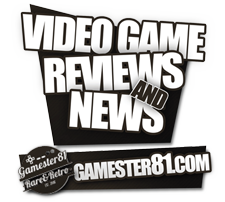Console: Atari 7800 ProSystem
Manufacturer: Atari, Inc
Availability: January 1986
Cost: $140 ($297.56 with inflation)
History:
Atari Inc first announced the Atari 7800 Pro System (also known as simply the Atari 7800) in 1984. It was the first Atari system designed by an outside company, General Computer Corporation. At the time Atari’s Atari 5200 system was not selling well, and the Atari 2600 was nearing an end. Atari had felt pressure from competitors including Coleco’s Colecovision and Mattel’s Intellivision. There was also a lot of competition with the home computer market with the Apple II and Commodore 64 home computers. Atari wanted to release a new console that had superior graphics, and that was backwards compatible to the Atari 2600 system, something that the Atari 5200 wasn’t (eventually Atari would release an add-on adapter to play Atari 2600 on the Atari 5200).
When Atari Inc initially announced their new Atari 7800 ProSystem, they had planned on releasing it with twelve launch titles, and a special cartridge that would enable the player to save high scores. The Atari 7800 was superior to other home gaming consoles at the time because it has a 256 color palette display, and is capable of moving 100 different objects on screen.
In July of 1984 Warner Communications sold the Atari home gaming market to Jack Tramiel (Founder of Commodore International), and had decided to shelve the Atari 7800 and hold off on the release. General Computer Corporation had not yet been paid by Atari for their development for the Atari 7800, and Jack felt Warner Communications should pay the bill, while Warner Communications felt Jack Tramiel’s company should pay them. The home video game crash also ended up hurting video game sales, and the Atari 7800 would be held for two years until it was finally released in January of 1986. By this time Nintendo had entered the market with their successful Nintendo Entertainment System.
By 1985 Jack Tramiel had decided to finally pay General Computer Corporation for their contribution and the Atari 7800 was launched with a very small 300,000 marketing budget. Far smaller than what Warner Communication had initially planned. The Atari 7800 was also initially going to have expansion modules to allow keyboards and even a laserdisc player to connect to the system, which addressed a lot of parents concerns on investing in a home video game system and not a computer. When the Atari 7800 finally saw the light of day in 1986, none of these add-ons were produced, the high score cart was cancelled and only three launch titles were released for it.
One huge struggle that the Atari 7800 faced was the lack of third party support. Nintendo had a non compete clause with their third party developers, meaning that none of them could develop games on other systems. Despite the lack of marketing and third party support, Atari still managed to sell 3.77 million Atari 7800’s. But by January of 1992, Atari decided to drop support for the system. One big contribution as to why the Atari 7800 did fairly well was because it was completely backwards compatible to all Atari 2600, and could even use the Atari 2600 controllers and peripherals.
System:
The Atari 7800 ProSystem is very sleek in design. There are four buttons on the front of the system including: a Power, Pause, Select and Reset buttons. There are two controller ports in the front, and a wired in AC adapter that has an extremely long cord that wraps up underneath the system. The Atari 7800 ProSystem connects to the TV through an RF cord.
One downfall for the Atari 7800 is that the sound chip is the same chip that Atari used in their Atari 2600 system, so the sound isn’t great.
Because of some of the issues that the Atari 2600 had with unlicensed games including some of the pornographic games that were released, all games that came out for the Atari 7800 had to be “digitally signed” by Atari in order to work on the system.
Controllers:
The North American Atari 7800 was bundled with a controller that has two large orange action buttons on the sides, and a large joystick in the top-middle part of the controller. The European Atari 7800 came with a controller that is similar to an NES controller with the “1” and “2” action buttons on the right and a direction pad with an optional joystick attachment on the left.
Games:
The games for the Atari 7800 are the same shape as the Atari 2600 games. There were only 59 licensed games released for the Atari 7800, and some of the more notable ones include: Ballblazer (early LucasArts game), Donkey Kong & Donkey Kong Jr., Joust, Mr. Pac Man, and Rampage.
For additional History of Console reviews: Click Here
Join the new Gamester81 forums: http://dev2017.gamester81.com/forum









